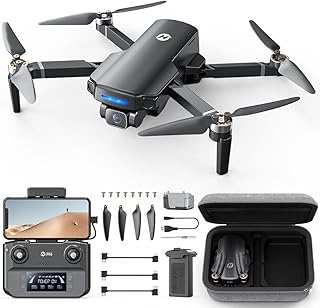Drones in Healthcare: Delivering Solutions and Saving Lives
Drones are rapidly transforming various industries, and healthcare is no exception. Their ability to navigate complex terrains, deliver goods quickly, and operate autonomously presents exciting opportunities for improving patient care and saving lives.
Here's how drones are making a difference in healthcare:
1. Medical Supplies Delivery:
* Remote & Underserved Areas: Drones can reach remote or disaster-stricken areas where traditional transportation is difficult or impossible, providing vital medical supplies to patients in need.
* Time-Sensitive Deliveries: Drones can deliver blood, organs, and other time-sensitive medical materials significantly faster than traditional methods, potentially saving lives in emergency situations.
* Cost-Effective Transport: Drones can significantly reduce the cost of medical transportation, especially in rural areas where infrastructure is limited.
2. Patient Monitoring & Telemedicine:
* Remote Monitoring: Drones equipped with sensors can monitor vital signs of patients in remote locations, enabling healthcare professionals to intervene quickly in case of emergencies.
* Telemedicine Consultation: Drones can be used to connect patients in remote areas with medical specialists via teleconferencing, providing access to expert medical care.
* Emergency Response: Drones can be used to assess disaster scenes and provide critical information to emergency responders, enabling faster and more efficient rescue operations.
3. Medical Research & Development:
* Sample Collection: Drones can collect biological samples from remote areas, facilitating research on diseases and environmental factors affecting human health.
* Drug Delivery: Drones can be used to deliver experimental drugs to patients participating in clinical trials, simplifying the process and improving efficiency.
* Data Collection: Drones can collect data on environmental factors that affect health, such as air pollution, water quality, and climate change, supporting public health initiatives.
4. Beyond Delivery:
* Blood & Organ Transportation: Drones are being explored for transporting blood and organs for transplant, potentially reducing waiting times and improving survival rates.
* Disaster Relief: Drones can be used for search and rescue operations, providing aerial surveillance and delivering medical supplies to disaster-stricken areas.
* Medical Training: Drones can be used to train medical professionals in remote areas, allowing them to access virtual simulations and expert guidance.
Challenges & Considerations:
Despite their potential, drones face some challenges in the healthcare sector:
* Regulations & Safety: Strict regulations regarding drone operation and airspace management are crucial to ensure safety and prevent accidents.
* Privacy & Data Security: Protecting patient data and ensuring the privacy of individuals is paramount.
* Technology & Infrastructure: Robust communication networks and reliable technology are needed for seamless drone operation.
* Public Acceptance: Public perception and trust in drone technology need to be addressed to ensure successful adoption.
Conclusion:
Drones are transforming the healthcare landscape, offering innovative solutions for improving patient care and saving lives. By overcoming regulatory and technological challenges, drones can become an invaluable tool in addressing healthcare needs, especially in underserved areas and emergency situations. Their ability to deliver vital supplies, provide remote monitoring, and facilitate telemedicine has the potential to revolutionize healthcare and create a more equitable and accessible healthcare system for everyone.


